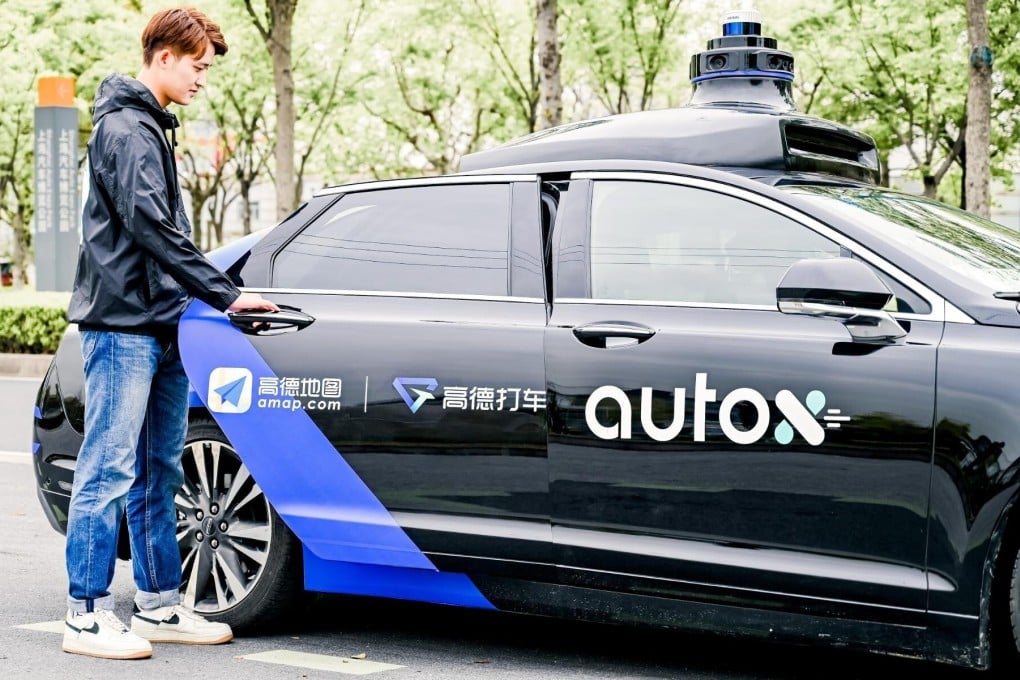AutoX, Alibaba’s AutoNavi roll out robotaxis in Shanghai’s ride-hailing services market
- Riders can choose to request both a regular car with driver or a self-driving RoboTaxi from AutoX at the same time from Autonavi’s Amap app
- Jiading, a district in the northwestern part of Shanghai, is the main coverage area for the self-driving car service

Shanghai commuters will now be able to take robotaxis for a spin on a major Chinese ride-hailing platform, with this week’s launch of a service initiated by autonomous driving start-up AutoX and mobility super app operator AutoNavi.
The service is available from Monday via AutoNavi’s Amap app, known as Gaode in Chinese, from which users can choose to request both a regular car with driver or a self-driving RoboTaxi from AutoX at the same time. The app’s algorithm determines which vehicle to dispatch based on the earliest time of arrival.
Jiading, a district with a population of more than 1.5 million located in the northwestern part of Shanghai, is the main coverage area for the service, which will initially cater to riders who had signed up before the launch.

“The service area of autonomous vehicles is an ever-increasing yet geo-fenced region, and the fleet size takes time to grow,” Xiao said. He described the combination of a human-driven fleet in the service as “a must-have for an autonomous driving company to be able to provide a truly useful service for all riders”.